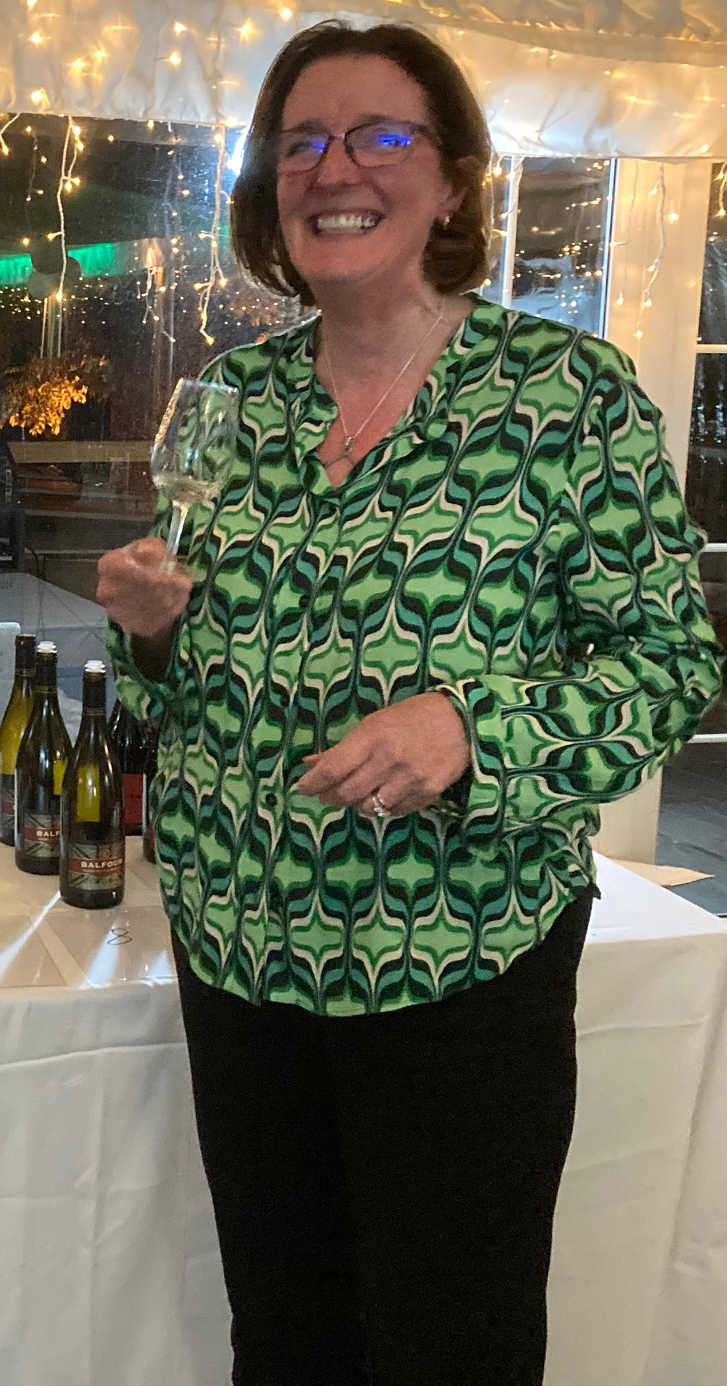 ‘The story has only just begun’ said Julia, introducing us to arguably as fine a selection of English wines as could possibly be assembled in September 2022. The wines were all winners in the 2022 WineGB Awards and Julia was referring, of course, to the development of British wine growing.
‘The story has only just begun’ said Julia, introducing us to arguably as fine a selection of English wines as could possibly be assembled in September 2022. The wines were all winners in the 2022 WineGB Awards and Julia was referring, of course, to the development of British wine growing.
Sparkling wines
The tasting extravaganza started with no fewer than five English sparkling wines, all differing in their expression of production methods, terroir and grape variety. The wines were all poured at the same time, so that a true ‘compare and contrast’ exercise could be undertaken.
First tasted was the 2020 Vagabond Pet Not from Vagabond Winery (13% ABV), £16.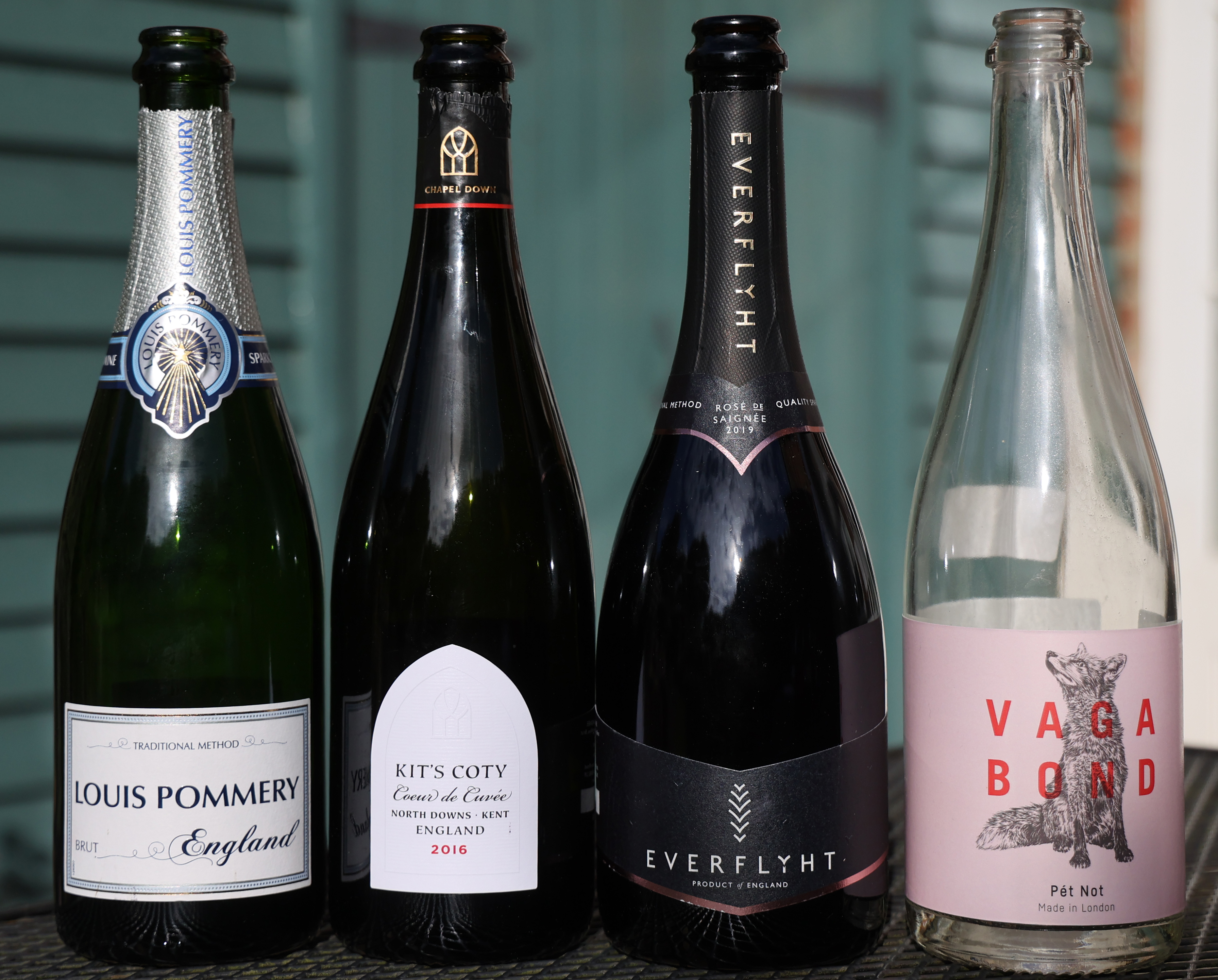
An urban winery, Vagabond is located in London’s Battersea. Made from 100% pinot noir grapes (sourced from Oxfordshire, Essex and Surrey) and made using the ‘méthode ancestrale’ the wine is low in sulphides and is bottle fermented. The wine’s name is a pun on the term pétillant naturelle and it is a non-disgorged pétillant wine. Presented with a crown cap, the wine’s pressure is less than that of a wine produced using the traditional method. A fine mousse with a little cloudiness from residual yeast and, on the nose and palate, some cherry, cranberries and blackcurrant leaf.
Wines 2-5 were all made using the traditional method.
2. Louis Pommery England Brut NV (12.5% ABV) £29.99
The cépage is 50% chardonnay, 35% pinot noir and 15% pinot meunier. With own vineyard plantings dating back to 2017, this wine will include a percentage of locally sourced grapes. Located in Hampshire, currently Pommery has around 30 hectares under vine, with a further 10 newly planted. The wine maker, Clémont Pierlot, is building a library of reserve wines and the French house of Pommery is certainly evolving an English style of sparkling wine – definitely not a champagne look-alike, although on the palate the wine is fresh and crisp (‘zingy’ was Julia’s description), with notes of lemon and Cox’s apple (much as a champagne would!). A vintage ‘Pinglestone’ wine is planned.
Pommery is one of two champagne houses to have set up ‘shop’ in the UK, the other being Tattinger, who are planning a first vintage in c2024 from their Domaine Evremond vineyard in Kent.
3. Chapel Down Kit’s Coty Coeur de Cuvée 2016 (12% ABV) £100
Sourced from the 95-acre Kit’s Coty vineyard on the North Downs of Kent, this Blanc de Blancs wine is made from 100% chardonnay and is hand harvested. Fermentation is with wild yeasts and the wine is kept on the lees in French oak for seven months, before bottling. On the nose and palate, hints of butter and toast (with a touch of cumin in the mix) as well as pears and melons. Clearly aimed at a prestige market in terms of its marketing and price.
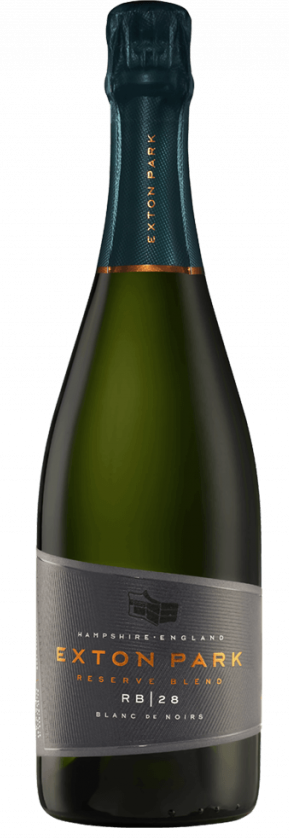 4. Exton Park RB 28 Blanc de Noirs NV (11.5% ABV) £43
4. Exton Park RB 28 Blanc de Noirs NV (11.5% ABV) £43
Contrasting with the 100% chardonnay wine above, this was a Blanc de Noirs made with 100% pinot noir. From a single 60-acre estate, Exton Park, near Winchester (Hampshire), the wine spends a minimum of three years on the lees. RB 28 refers to the 28 different reserve wines that are in the blend, The reserve wines have been built up over the past 11 years by winemaker Corinne Seely (previously of Coates and Seely, naturellement). The vineyard has a sustainability scheme – as do an increasing number of British vineyards. It’s a sunny site and the soil is almost pure chalk with nine different plots within the estate.
Julia explained that until recently there in general were no NV British sparkling wines, since the producers had not yet built a library of reserve wines. The style of English sparkling wines is still evolving, as the winemakers experiment with length of time in oak and on the lees, the use of wild yeasts and of course the impact of the development of the vines themselves. Nonetheless, thought Julia, a distinctly ‘British’ style is emerging characterised by that quality of fresh zinginess and purity of flavour.
5. Everflyht Rosé de Saignée 2019 £40 No ABV information available
Situated at the foot of Ditchling Beacon in the South Downs National Park, the 10-hectare Everflyht estate was first planted in 2016. The Rose de Saignée is a blend of 60% pinot noir and 40% pinot meunier, with the grapes hand-picked. The intense colour is developed from colour bleed from the grapes, not from the addition of any red wine. The wine is aged on the lees for 18 months. On the nose and palate, ripe soft red fruits (cherries, strawberries) with some brioche notes. The estate also grows chardonnay, pinot gris, gamay and pinot precoce grapes. The winemaker was previously at Ridgeview and wine making is done at Hambledon in Hampshire.
In response to questioning, Julia discussed the tactics of WineUK in relation to the nomenclature for English sparkling wines. Brands are seen as leading, rather than the category, although some producers do feature potential generic terms such as Merrett and Britannique. The lessons of Prosecco and Cava have been considered, where individual producers are virtually unknown since the generic term has itself become a brand and has overtaken the individual brand names. The experience of Cap Classique in South Africa has also been considered, where a lot of funding was put behind the establishment of the term, but still it is not widely known what it stands for. The term British wine was in the past used for highly alcoholic wines made from imported grapes, but some attempt is being made to ‘grab back’ the name, hence WineGB. In the USA, the term British fizz is frequently used so there is some potential.
Still white wines
Wines 6, 7 and 8 were poured together.
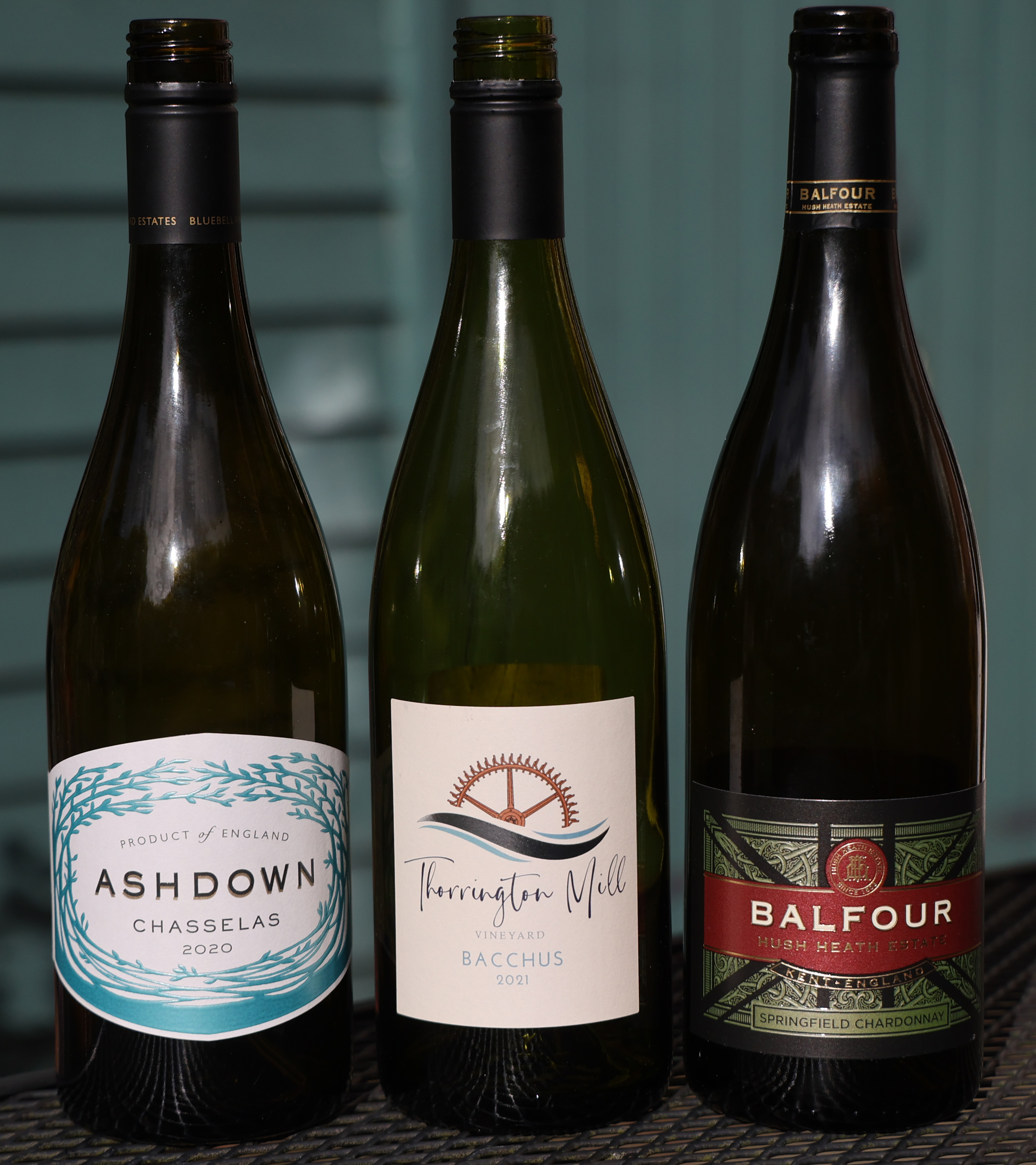 6. Bluebell Ashdown Chasselas 2020 £15.95
6. Bluebell Ashdown Chasselas 2020 £15.95
The c30 acre Bluebell estate is located in Sussex, on the edge of the Ashdown Forest and based around what was once a pig farm. Chasselas is a traditional Swiss grape and not a lot is grown in the UK (only around 2.5 hectares) with most of the planting at Bluebell. It is considered that the cooler UK climate is in fact better suited to the growing of chasselas than Switzerland, since most of the Swiss planting is on lower, hotter slopes. On the nose and the palate, hints of lime zest, peach blossom and white pepper. Good acidity.
7. Thorrington Mill Bacchus 2021 c£17
Grown in Germany as well as the UK, bacchus is considered by many to be a quintessentially English grape. Thorrington Mill vineyard is a 12 hectare estate located on the north Essex coast with the first plantings dating back to 2018. Run alongside a working farm, sheep graze between the vines. On the nose and palate, nettles, grapes and elderflower, with some resemblance to sauvignon blanc.
Julia explained at this point about research that is currently underway by Dr Alistair Nesbitt of Vinescapes, into the potential for growing particular grape varieties in the UK. For example, pinot noir in East Anglia and the comparison points between the soils of Essex and Burgundy.
8. Balfour Springfield Chardonnay 2018 (ABV 12%) £25
Founded by Richard and Leslie Balfour-Lynn, the first plantings at the Hush Heath estate date back to 2002. Their aim was to produce the best English sparkling rosé and their Brut Rosé won a gold medal at the International Wine Challenge in 2007. Considerable investment has been made into the winery. Business interests include the production of cider as well as wines and pubs and hotels. A son has succeeded his father as wine maker at Balfour and each has their separate views on oak treatment and malo-lactic fermentation! Hand-picked, the grapes for this wine are fermented in stainless steel tanks and barrel aged in new French and American oak. On the palate, grapefruit, green apple and cinnamon. Some felt it could be compared to a young Chablis.
Currently, Julia explained, retailers are very much behind English wines with some retailers, especially Waitrose, featuring locally produced wines. Tesco and M&S have their own label English wines. Majestic has two English wines in its Definitions collection.
Pricing is sometimes questioned – why are English wines so expensive when there is no import duty? Duty is only £2.50, other duties are the same as for imports. Production costs are arguably relatively high since winemakers here do not, as yet, enjoy the same economies of scale as longer-established wine producers. The quality of English wines will arguably sustain the price points as consumers recognise the value of English wines.
Around 4% of English wines are exported, with Norway, the USA and Japan amongst the largest markets. The direct to consumer sector is still the largest market however. Wine tourism is expanding and WineGB is working with Visit Britain to help promote wine tourism to an international market.
Still Red Wines
Wines 9 and 10 were poured together.
9. Gusbourne Pinot Noir 2020 £35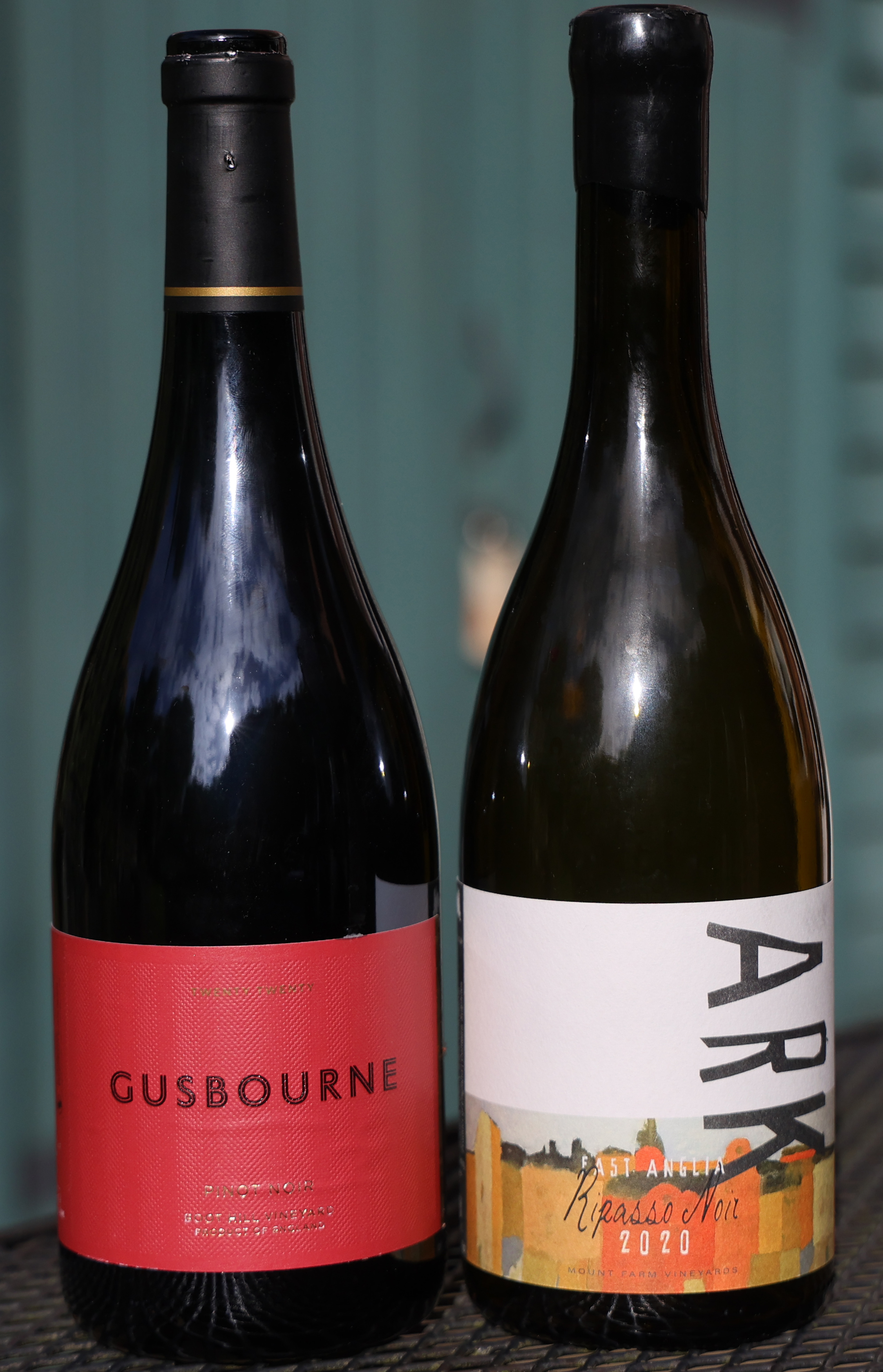
First plantings were in 2004 and today chardonnay, pinot noir and pinot meunier are grown across the 60-hectare Gusbourne estate in Kent and their 30 hectare estate in West Sussex. Grapes are hand-picked. Only grapes grown on the Gusbourne estate are used in their wine making. Different clonal varieties are grown at each estate due to the differing soil qualities. Charlie Holland, the head wine maker, is a three time IWSC champion wine producer. A light red in colour, the wine on the nose and palate has some cherry and strawberry fruits and is lightly tannic. Good length with fruits predominating but enough oak to enhance the complexity of the wine.
10. Ark Ripasso Noir 2020 £30
Mount Farm Vineyard is a 30-acre estate in the East Anglian Stour Valley. Soil is a mixture of clay and loam. (The same soils are found in the Napa and Barossa Valleys and in north-eastern Pomerol.) It is run by a Swedish family who grow eight different grape varieties and experiment with different techniques and varieties. Wine making is on site. Their Ark Ripasso is made by drying acolon grapes (a German cross of lemberger and dornfelder) on straw for 90 days before fermenting them and blending with pinot noir. The wine is dense and rich, with lots of red fruits and a hint of spice and eucalyptus. Julia considers this wine has ageing potential.
Hilary Reid Evans gave the vote of thanks, asking Julia to return to the Club and keep the Club updated with the GB wine story, and commented that Julia spoke so quickly she suffered a repetitive strain injury trying to keep her notes up to date!
HRE
3.10.22